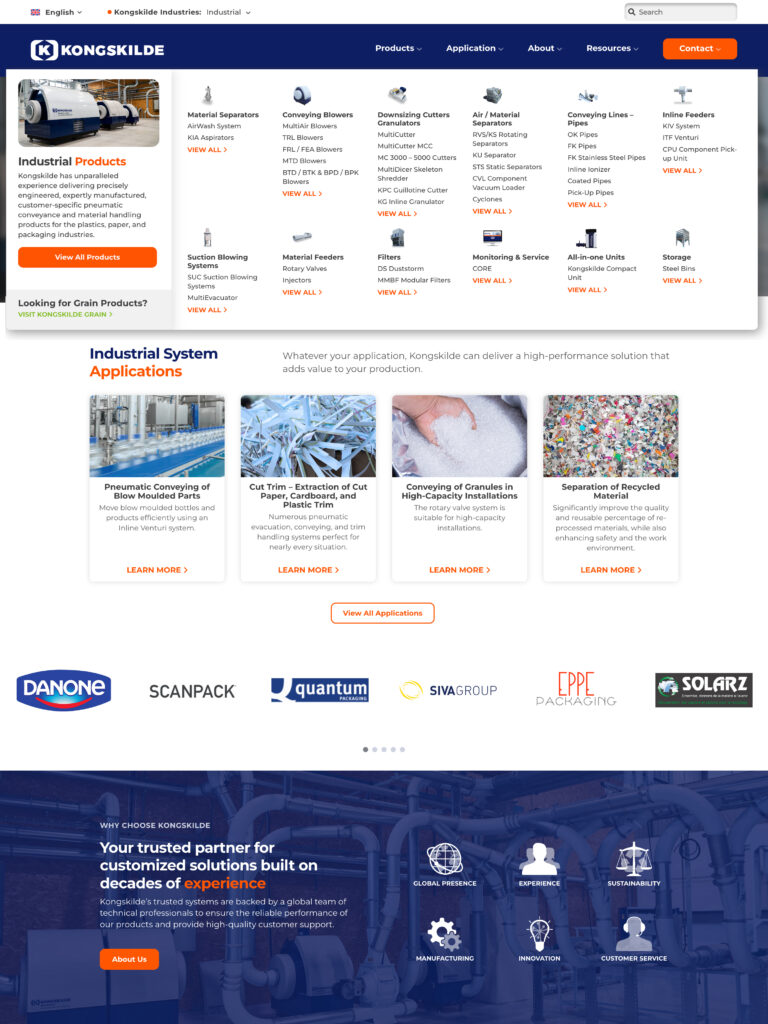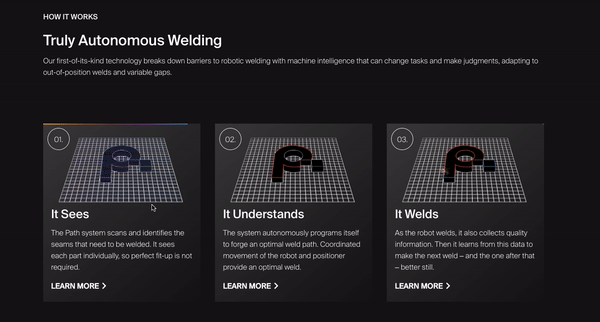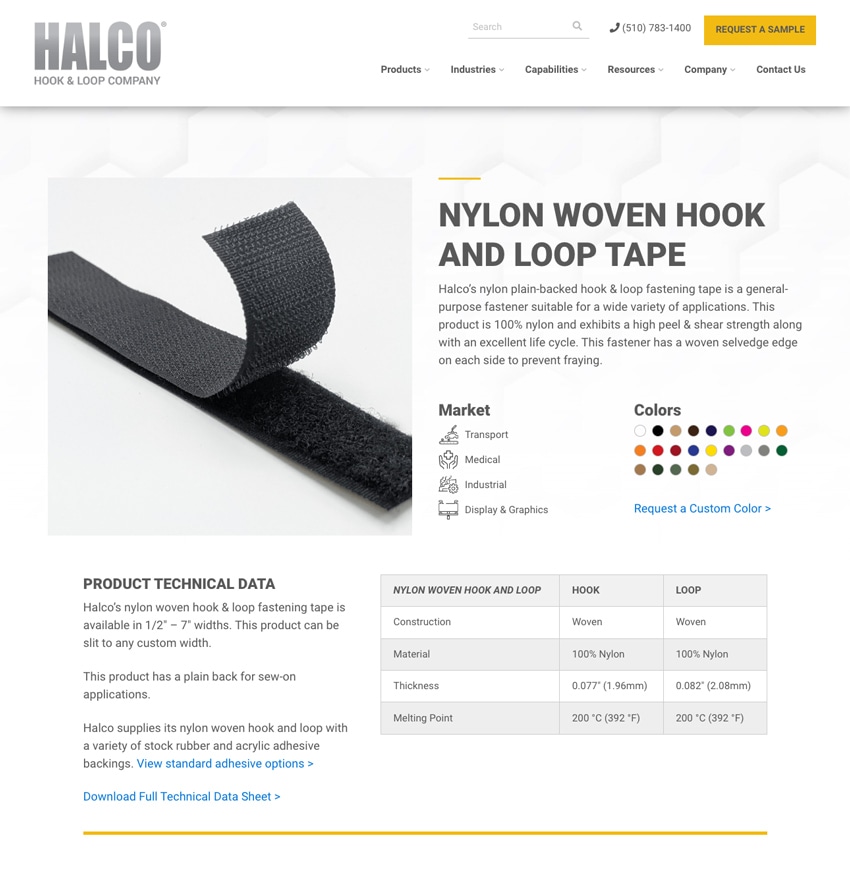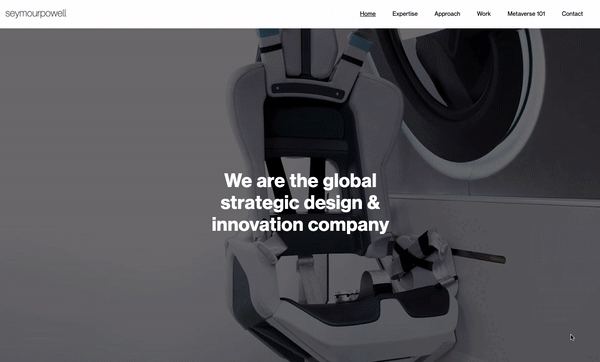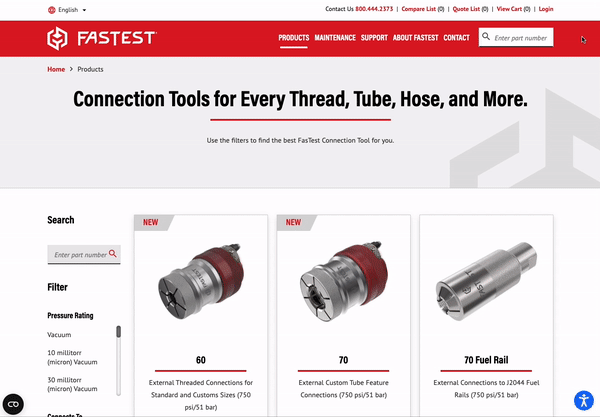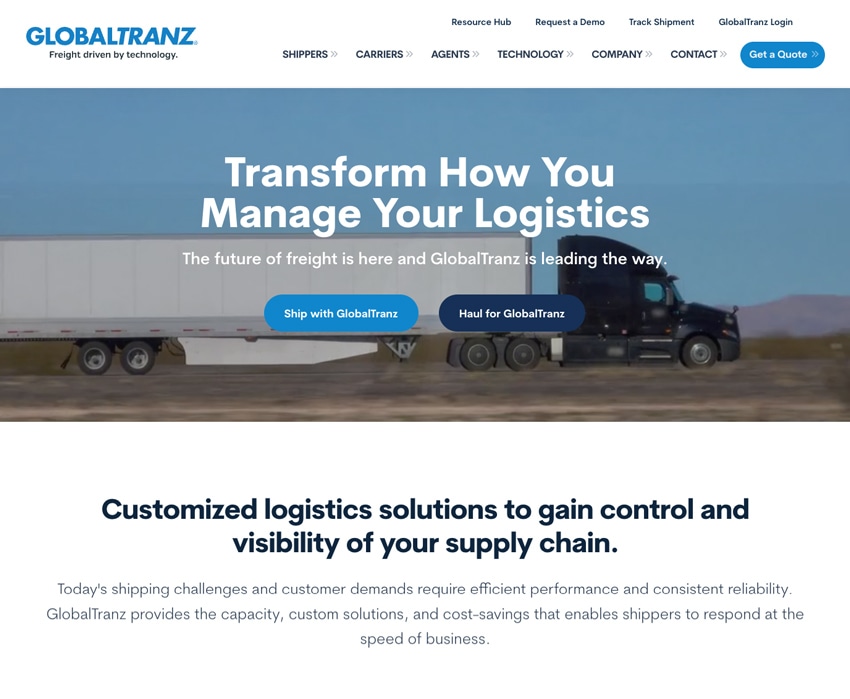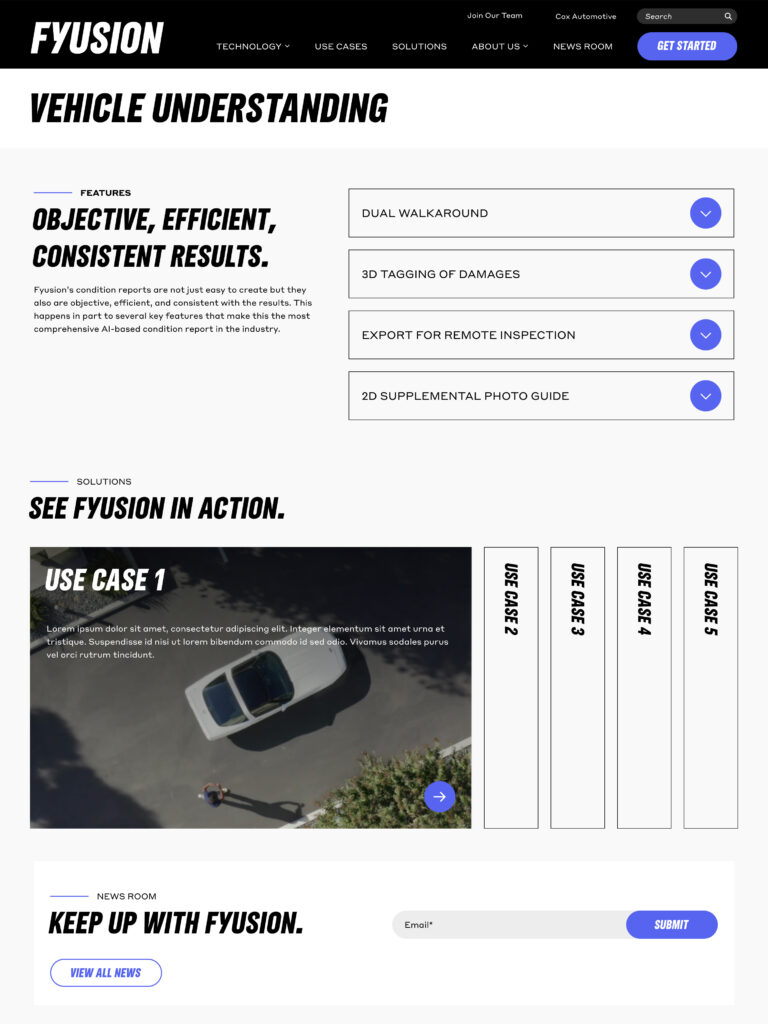Top 9 B2B Web Design Trends in 2025
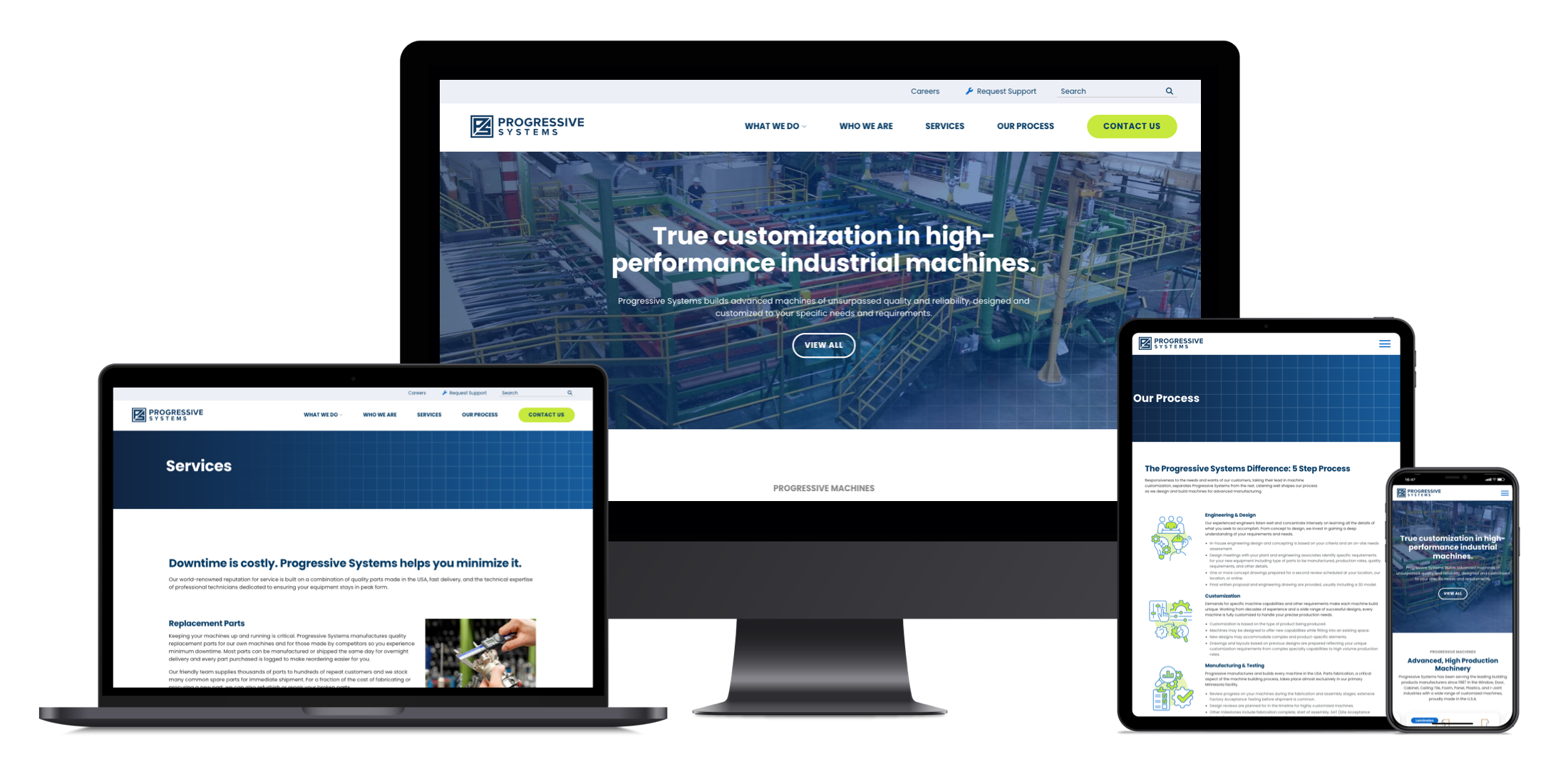
Enhanced web design is an essential part of any successful 2025 marketing plan.
Web design is a critical element of any successful 2025 marketing strategy. In today’s fast-evolving digital landscape, your website isn’t just a platform—it’s a reflection of your business’s value, innovation, and expertise. As technology advances, so do the expectations of B2B audiences. The past year brought groundbreaking developments in AI technology, redefining how businesses engage with their users. Naturally, web design strategies and UX best practices have evolved alongside these advancements.
In the technical B2B world, when you’re selling custom products & services, visitors to your website will perceive the quality of their experience with your website to be equal to the quality they can expect from your offerings. A modern, intuitive website communicates professionalism, credibility, and leadership in your industry. Staying ahead by adopting the latest trends and techniques is no longer optional—it’s essential for standing out in a competitive market. Below are the nine trends we’re seeing at our B2B website design agency:
B2b Website Design Trends & Best Practices
1. High-Quality Product Imagery
As we’re seeing advances in screen resolution, faster connectivity and simplified design, users are demanding imagery that’s not only engaging but feels authentic. It’s critically important that any photos are an accurate portrayal of your offerings and the experience of working with your team. Visitors can often detect stock photography, which can lower their level of trust and leave critical gaps in their understanding of your offerings. So investing in custom, high-quality photography can create a more impactful and credible online presence. When custom photography isn’t practical, very carefully selected stock photos can fill the gap.
For example, Kongskilde Industrial’s new website launched photography at the forefront of the website design. We utilized product photography in a unique mega menu design that allows users to visually navigate product categories. Additionally, application images were used to showcase the breadth of their solutions.
2. Animation
One of the many benefits of faster-loading websites is the ability to use animation. While the majority of elements should remain static, creating visual interest or emphasizing key information with subtle movement is a B2B website design trend we anticipate to continue through 2025. When used sparingly and intentionally, this can add a fun, engaging touch to a website.
For example, Path Robotics, a supplier of robotic welding solutions, has a complex software program that is better explained using infographics with motion. In the design and development process, we strategically planned for the images to only move subtly, when hovered on, to keep the motion from overwhelming the user.
3. Content-Oriented Design
As platforms like WordPress and other web development tools evolve, emphasis has shifted toward editor-friendly, flexible design interfaces that prioritize content. The days of rigid templates and overwhelming “walls of text” are fading, replaced by dynamic layouts that adapt to the specific needs of each page. Page-by-page layouts are now unique, as every page serves its purpose effectively. Dynamic layouts include a seamless blend of text, visuals, and interactive elements, making it easier to highlight key information and tell the story of products and offerings.
Product pages, like HALCO’s, effectively display the product information, images, and details clearly. Technical data is neatly organized in a labeled section and presented in a table for easy comparison, with a downloadable datasheet for more details. The inclusion of markets, applications, and color options caters to diverse user needs, while strong calls-to-action like “Request a Sample” encourage engagement.
4. “Scrollytelling”
Scrolling through a long web page can be something of a love-hate experience. Though in 2024 and into 2025 we’ve seen UX research that suggests scrolling has become second nature to users. It’s now an intuitive way to explore content. Designers are leveraging vertical space to transform dense, complex information into interactive, narrative-driven experiences. This is especially seen on homepages that start with an overview at the top of the page, which typically consists of a strong positioning statement, overview of products/services, and problem/solution language, while providing deeper and more detailed information as you scroll down the page. The ability to add more visual content, infographics and imagery within this experience creates more effective website communication than words alone.
5. Sticky Menus
The trend of longer, scrolling website pages calls for the standard use of sticky menus. A fixed navigation bar, aka “sticky menu,” makes sure visitors don’t get lost. When the main menu is always available at the top of the screen, the user is free to scroll down a very lengthy page while maintaining constant access to other pages, without having to scroll back up to the top or down to the bottom.
6. Big, Bold Type
In our fast-paced, digital world we have less and less time to convert. With users spending less time on websites, designers are adapting to include large headlines and shorter messaging to capture attention. This is generally accompanied by additional content, in smaller type, to further explain concepts or increase SEO value, but we anticipate this bold, “less-is-more” approach to copywriting to continue through 2025.
Website design trends will continue to evolve as technology and tastes change. In B2B website design, you might not jump on every trend, but you’ll want to keep your website looking current and relevant, to help your business connect and convert.
7. Grid Layouts
We’ve seen websites moving toward simplicity in layouts for the past few years. Grid layouts and compartmentalization are the next evolution. This design allows information to be presented in an easily-digestible, visually appealing format. Especially in B2B & industrial website design, users are able to move through a website with clear emphasis on key information and product features all in one viewport.
8. AI Integration
AI has become a buzzword in b2b marketing. In 2024 and into 2025 we’ll see web design and digital marketing revolutionized by AI tools. By leveraging AI in UX and web design, B2B businesses can better understand visitor behavior, anticipate needs, and deliver content that resonates. AI-driven content optimization is a cost-effective way to suggest improvements, create blog ideas, and expand on thought leadership content. AI is also handling complex queries and chatbots. Custom AI can answer users’ questions in real-time, guide them through technical specs, or assist with pricing. We’ll see new and existing tools expanded in 2025 that will be invaluable for b2b industries with complex offerings and long sales cycles.
9. 3D Visuals and Interactive Elements
In 2025, we’ll see 3D visuals and interactive elements become commonplace elements in B2B web design. Users can explore complex offerings through a streamlined and engaging experience. For instance, visualizing internal components of machinery or simulate real-world applications to better understand the products and services. These tools offer the depth and interactivity buyers need to make confident purchasing decisions remotely, minimizing the need for on-site demonstrations and effectively reaching global audiences.
Why Staying Ahead in Web Design Trends Matters in 2025
Staying ahead in B2B web design means embracing change, adopting innovation, and understanding the evolving needs of your audience. Your website is more than a digital platform; it is a strategic asset that shapes perceptions, drives engagement, and strengthens your competitive edge. Trends like high-quality imagery, AI integration, and interactive 3D elements are not just about aesthetics—they deliver real value by enhancing user experience, building trust, and simplifying complex decision-making processes.
By leveraging these web design trends, your business can create a website that doesn’t just look good but functions as a powerful tool to attract, engage, and convert your target audience. As the B2B digital landscape continues to transform, aligning your web design strategy with these trends ensures you remain relevant and prepared to capture the opportunities that lie ahead.



